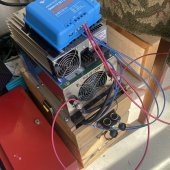12VoltInstalls
life passes by too quickly to not live in freedom
Well some of those are fairly high current. One HP is ~768W, and some of those thrusters are way above 1HPthrusters etc.
Any concerns i need to take into considerations regarding this ?
So I would study up on that. 12V cabling to accomplish that load… fuses to protect from a woopsie etc




